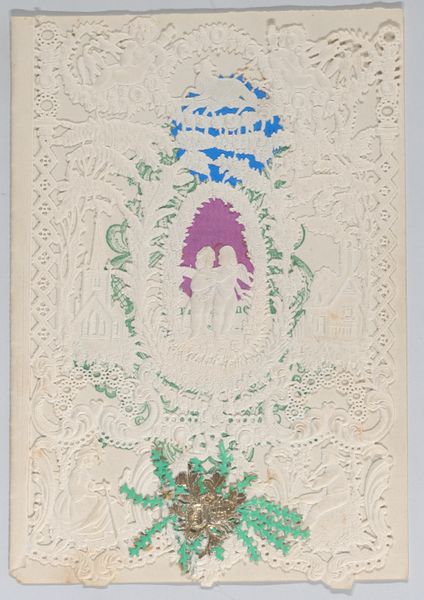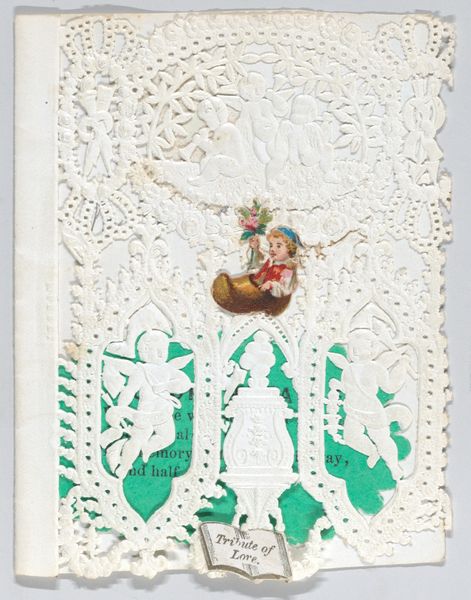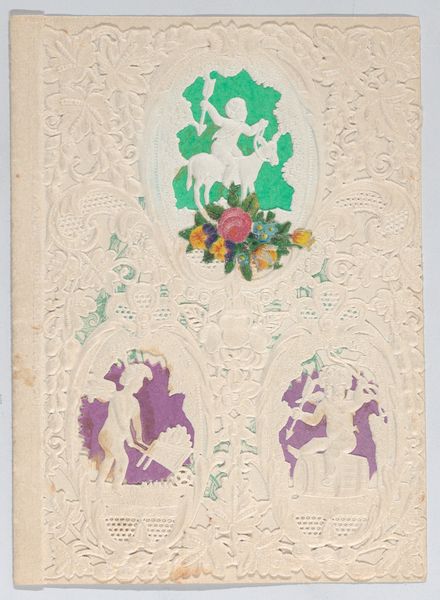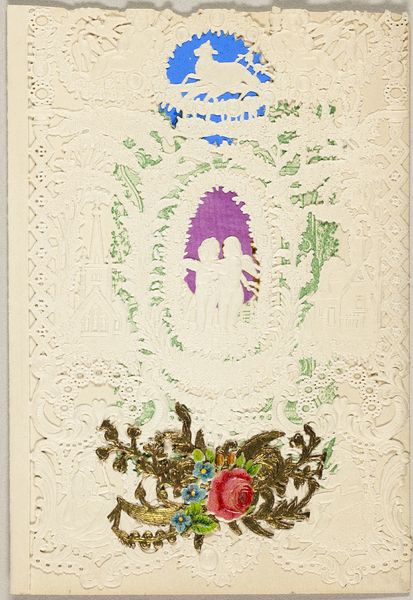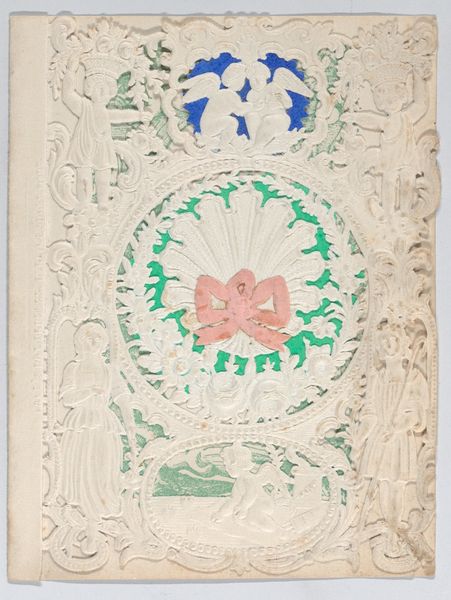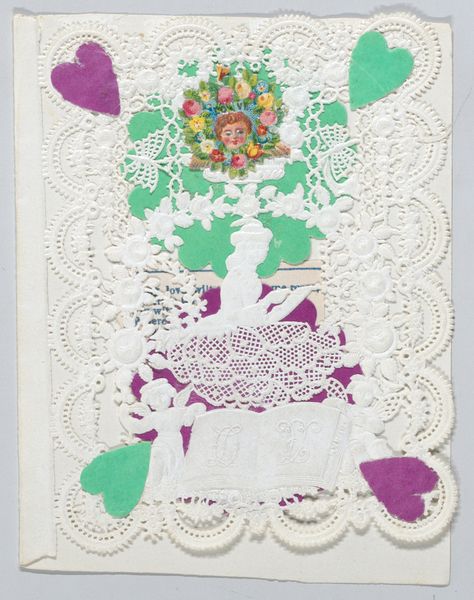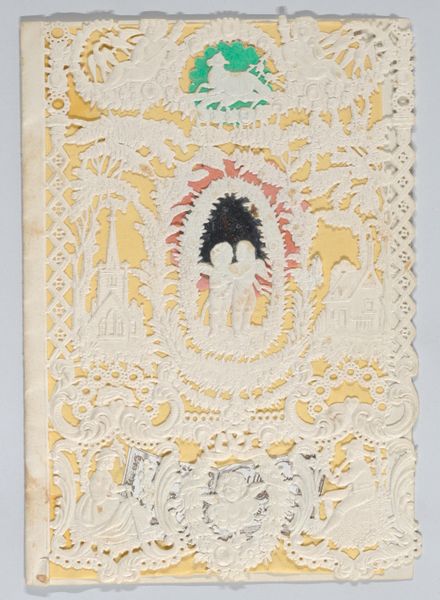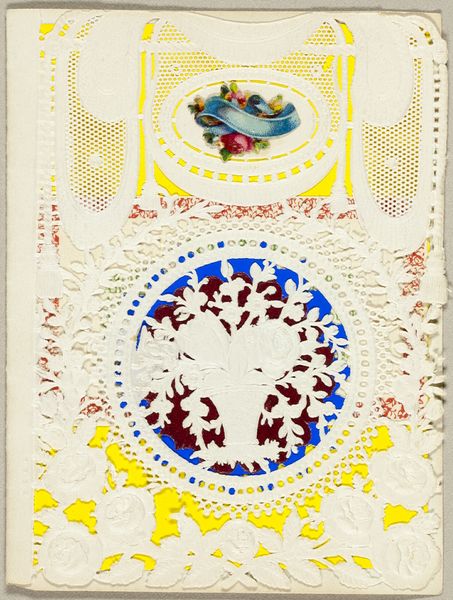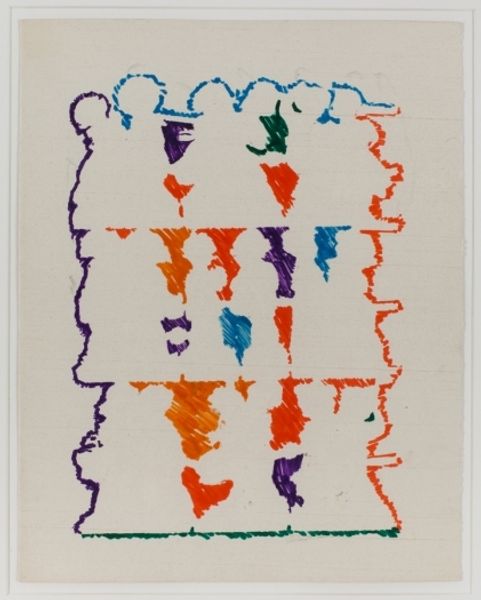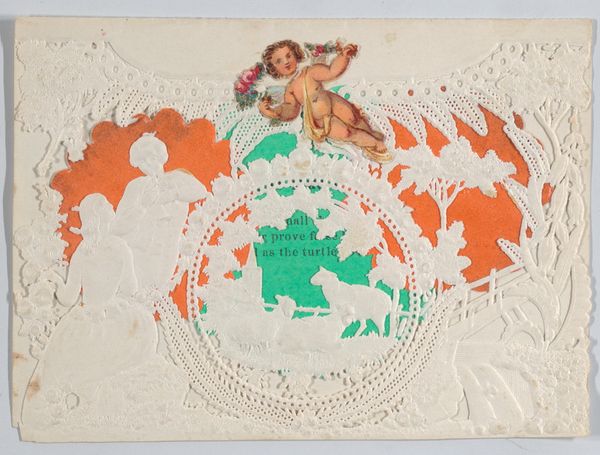
drawing, print, paper, watercolor
#
drawing
# print
#
paper
#
watercolor
#
naive art
#
decorative-art
#
decorative art
#
watercolor
Dimensions: Width: 3 5/16 in. (8.4 cm) Length: 4 3/4 in. (12 cm)
Copyright: Public Domain
Curator: This valentine card, an early example from the period of 1847 to 1879, is now housed at the Metropolitan Museum of Art. Aren't the delicate paper cutouts just stunning? Editor: They are. Immediately, I’m struck by the intense contrast of the refined decorative techniques with a kind of folksy, almost naive quality to the imagery itself. It's an interesting tension. Curator: Definitely. The artist, Esther Howland, employed a clever assembly-line system, training women to craft these elaborate cards. The layering of printed images, drawing, and watercolor on paper makes each one unique. And don't you love how this "Valentine" explodes with hearts, kissing figures, and angels? It’s practically vibrating with sweetness! Editor: Indeed. However, it's also a potent example of commercialized love. Consider the rise of the middle class during this period, and the growing consumer culture. Howland brilliantly tapped into a market that desired these highly ornamental, mass-produced declarations of affection. Curator: Ah, but you can't deny the sheer artistry! Look at the meticulous detail in the lace-like borders and those tiny birds... They evoke a sense of innocence, almost as if plucked from a childhood dream. It’s playful and a little bit naughty, like skipping class to carve initials into a tree. Editor: Precisely! That's part of the genius. It performs that dance between respectability and nascent desires. We see that even in the positioning of the churches at each side, they almost contain the kissing figures within a sanctioned social order, however flimsy. Curator: You've given me so much to think about. It's fascinating how an object as seemingly simple as a valentine card can reveal so much about society and ourselves! Editor: It is. The art of love, after all, is often about navigating complex cultural landscapes. And, let's not forget, finding moments of genuine connection amidst all the manufactured sentiment.
Comments
No comments
Be the first to comment and join the conversation on the ultimate creative platform.
